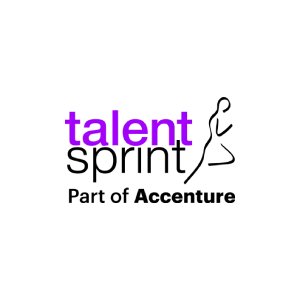What is Professional Development?

When Satya Nadella became the CEO of Microsoft, his biggest challenge was never about the technological change but the cultural shift that he had to face. So he encouraged employees to move from a “know-it-all” attitude to a “learn-it-all” mindset, proving that growth and innovation start with learning.
So, in today’s fast-changing world, the key to career success lies in one simple habit, and that is continuous learning.
Professional development is more than just attending training sessions or earning certificates; it’s about growing your skills, expanding your mindset, and staying adaptable in a world that never stops evolving.
What is Professional development?
Professional development is a continuous journey to gain new skills, knowledge, and competencies that boost your career growth. This is not casual learning - it involves well-laid-out activities that improve your professional capabilities and help you work better in your current or future roles.
Why is Professional Development Important?
Just imagine giving yourself an upgrade for your career like you do with your mobile phones, you buy the latest models with the smartest features and also easy to use, but we can’t exchange human beings like this, so we need to upgrade yourself every now and then to get along with the Popfessional world It helps you learn new skills, stay confident, and be ready for opportunities that come your way.
For example, a fresher learning Excel, presentation skills, or basic coding isn’t just doing extra work, they’re building tools that make them stand out during jobs or internships. Even soft skills like communication or teamwork make a huge difference in how people see you at work.
How does it differ from personal development?
Personal development shapes who you are, while professional development focuses on your career capabilities and performance levels. Your personal growth journey includes all aspects of life. Professional development targets your career path and workplace achievements specifically.
Also Read: How to Improve Your Personal Development Skills?
What are the Types of Professional Development?
Professional development takes many forms. Each form gives you distinct advantages to advance your career. Learning about these different approaches will help you make better decisions about your learning experience.
Self-directed learning
You control your professional development experience through self-directed learning. This approach lets you own your learning goals, create plans and track progress. The work environment changes faster than ever, making self-directed learning more valuable as you adapt to new needs. Self-directed learners enjoy more freedom in their choices, stay motivated and use time better.
Company-sponsored training
Organisations develop their employees' skills through formal training programmes. These programmes range from leadership workshops to technical training sessions.
Amazon stands out as an example with its upskilling programmes like AWS Training and Certification, Career Choice, and Machine Learning University. Both employers and employees share training costs, though employers usually pay more. These programmes help companies keep talent, improve retention rates and boost overall performance.
Professional networking and peer learning
Building relationships with others in your field creates mutual career benefits through professional networking. Networking opens doors to job opportunities and gives you access to professional advice and industry knowledge.
Peer learning happens when colleagues share their experiences in organised settings. Peers and supervisors often teach more than formal training programmes. People learn to communicate better, see different views and develop feedback skills through this shared approach.
Academic and industry certifications
Certifications confirm your expertise in specific areas and make employers notice you more. These credentials usually need education, exams and regular renewals. Many certifications lead to higher-paying specialised jobs.
Google Career Certificates serve as a good example. They prepare you for in-demand careers through flexible online training and provide job search tools.
What are the Benefits of Professional Development?
Professional development provides many personal and professional benefits that improve your workplace effectiveness.
Improved confidence and decision-making
This confidence comes from proving your existing skills while learning new ones. You'll develop stronger decision-making abilities and learn to assess situations from multiple points of view. These skills help you make calculated choices even under pressure. Your newfound confidence reaches beyond work and positively affects your personal goals and well-being.
Better communication and collaboration
A manager's ability to communicate is a vital skill. Professional development helps you improve both verbal and non-verbal communication techniques. Today's complex business environment demands strong collaboration skills.
Example: speaking at a conference, shadowing a manager and earning a new certificate
Conference speaking builds your professional reputation and shows your leadership potential. Job shadowing gives you direct exposure to specific roles. This hands-on experience helps you understand organisational processes and develop practical skills. Certificates demonstrate your expertise in specific areas.
Steps that lead to professional development
A good professional development plan needs strategic thinking and regular check-ins. Your career advancement depends on a clear roadmap. Here are four steps that will help you build one:
Step 1: Assess your current skills and goals
Start with a full picture of where you stand now. Look at your strengths, weaknesses, and what you want to achieve. Think about the parts of your job you enjoy most and the skills you'd like to improve. This self-reflection will help you find your purpose and boost job satisfaction by spotting hidden talents.
Step 2: Set SMART development goals
Your assessment should lead to clear objectives based on the SMART framework: Specific, Measurable, Achievable, Relevant, and Time-bound. This method takes away uncertainty and makes progress tracking simple. Your goals should spell out exactly what you need to do, who's in charge, and the steps needed.
Step 3: Identify resources and learning methods
The right resources can make a big difference in reaching your development goals. You might want to look into:
- Workshops, webinars, and industry seminars
- Professional networks and mentorship opportunities
- Academic courses and certifications
- Company-sponsored training programmes
Pick resources that match how you learn best—through reading, teamwork, or structured courses.
Step 4: Track progress and adjust as needed
Your progress needs regular reviews based on your timelines and SMART criteria. Goal-setting software can help you track milestones effectively. A professional development plan grows with you as your goals, priorities, and situation change.
The Role of professional development in career growth
Professional development drives career advancement in today's fast-paced workplace. It shapes your career path and creates real professional opportunities that go beyond learning new skills.
1. Enhancing employability and job security
Upskilling makes you more valuable in your role. By continuously learning, you become adaptable and better equipped to handle evolving job requirements, ensuring long-term career stability.
2. Opening doors to promotions and new roles
Professional development can open doors to higher positions and exciting new responsibilities. Certifications, courses, or specialised training demonstrate your commitment and readiness to take on more challenging roles in your career. This shows how planned development creates paths to better positions.
3. Developing transferable skills for career shifts
The skills you develop today can be applied across roles and industries. Transferable skills not only make transitions smoother but also prepare you for leadership opportunities, keeping your career flexible and future-ready.
Conclusion
There’s a saying that goes like, “Train people like they want to leave and treat them like they don’t want to.”
That’s the essence of professional development as it empowers you to stay relevant, inspired, and ready for what’s next. In the journey of career growth, learning isn’t just a phase; it’s a lifelong journey that fuels growth and opportunity.
Professional development isn’t just a step in your career; it’s the journey itself. In a world where change is the only constant, the ability to keep learning, unlearning, and relearning defines true success. When you invest in your growth, you don’t just sharpen your skills; you reshape your mindset, expand your opportunities, and future-proof your career.
Frequently Asked Questions
Q1. How does professional development contribute to career growth? \
Professional development enhances employability, job security, and opens doors to promotions and new roles. It helps you acquire new skills, stay current with industry trends, and develop transferable skills that are valuable across different positions and sectors.
Q2. What are some common formats for professional development?
Professional development can take various forms, including online courses, coaching sessions, industry certifications, workshops, seminars, and job rotation opportunities. These formats offer flexibility to suit different learning preferences and career needs.
Q3. How can I create an effective professional development plan?
To create an effective plan, start by assessing your current skills and goals. Then, set SMART (Specific, Measurable, Achievable, Relevant, Time-bound) development objectives. Identify suitable resources and learning methods, and regularly track your progress, adjusting as needed.
Q4. What are the benefits of engaging in professional development?
Engaging in professional development can lead to improved confidence, better decision-making skills, enhanced communication and collaboration abilities, and increased job satisfaction. It can also result in tangible benefits such as salary increases and career advancement opportunities.
Q5. How does self-directed learning differ from company-sponsored training? \
Self-directed learning puts you in control of your professional development journey, allowing you to identify your own learning goals and create a personalised plan. Company-sponsored training, on the other hand, is typically more structured and aligned with organisational needs, often providing formal programmes to develop specific skills relevant to your role or industry.

TalentSprint
TalentSprint is a leading deep-tech education company. It partners with esteemed academic institutions and global corporations to offer advanced learning programs in deep-tech, management, and emerging technologies. Known for its high-impact programs co-created with think tanks and experts, TalentSprint blends academic expertise with practical industry experience.



